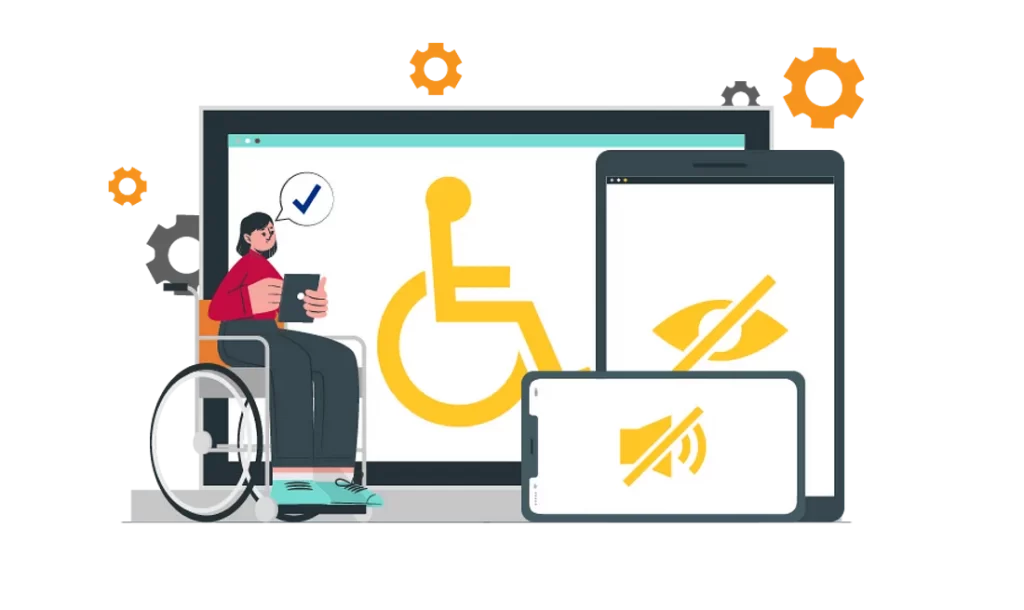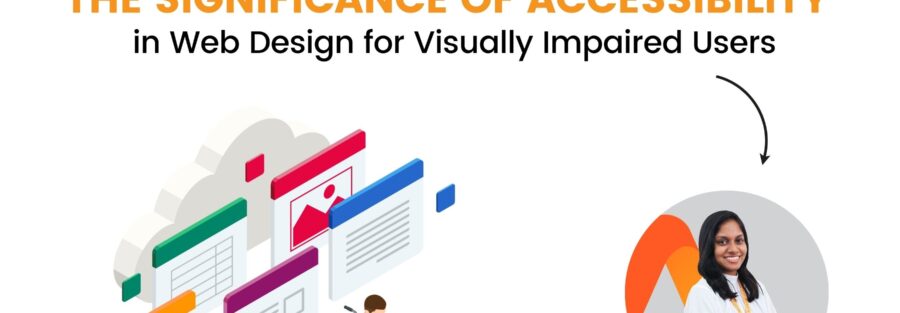By Sewvandi Wickramasinghe

Have you considered the importance of online accessibility and making your website inviting to all visitors, including those with disabilities or visual impairments?
From the perspective of visually impaired users, Web Accessibility, also known as “Web A11y” (where “A11y” is a numeronym for “Accessibility”), necessitates creating and implementing web content that is easy and effective to use by people with visual disabilities like low vision, legal blindness, color blindness, and night blindness. The severity of visual impairment can be mid, moderate, serve or profound.
Web accessibility not only improves the use of the web for people with long term disabilities, but it also benefits those who face temporary or situational problems such as ageing, sluggish internet connections, or transient physical limitations like a broken limb.
Why Web Accessibility Matters.
It is important to integrate accessibility into all stages of the design process, including content production and product development approaches.
Inclusivity
Web accessibility guarantees that people of all abilities, including those with impairments, can find and utilize online content and services without difficulty.
GDPR Regulations
The General Data Protection Regulation (GDPR) requires that all digital material comply with accessibility criteria by mid-2025. This guideline emphasizes the significance of preserving user privacy and creating an inclusive online environment, which aligns with GDPR’s larger goals of protecting individuals’ data rights.
User Experience
Improved accessibility frequently results in a better overall user experience for everybody, as design improvements benefit a larger audience.
Technological Advancements
With the changing world of assistive technology, online accessibility is becoming more important for ensuring compatibility and usability.
Adaptability
Accessible design accommodates a wide range of devices and browsing settings, making information more flexible to changing technology and user preferences.
Learning and Knowledge Transmission
Throughout the iterative development process, team members gain vital information and insights, helping to build a learning organization and encouraging knowledge transfer within the team.
Accessibility Testing

Accessibility testing is an important procedure that determines how easily a digital product may be accessed, understood, and used by people with visual impairments.
The primary goal is to ensure that websites, apps, and digital material are accessible and usable for those with visual impairments. This covers people with varied degrees of visual impairment, such as blindness or low vision, and strives to identify and resolve any barriers to their access or usage.
You might want to look into the accessibility testing methods listed below.
Keyboard Navigation
- Check that all interactive features can be accessed and triggered with the keyboard.
- Tab through the text in a logical manner, keeping emphasis visible and moving progressively.
- Confirm that dropdowns, modals, and other interactive components can be navigated and used with a keyboard.
ARIA Attributes
- Check that the ARIA (Accessible Rich Internet Applications) properties are properly implemented.
- Ensure that ARIA roles, states, and attributes are used correctly to improve the semantics and accessibility of dynamic content.
Screen Readers
- Test your website or application with common screen readers such as JAWS, NVDA, and VoiceOver.
- Ensure that screen reader users obtain useful and contextually relevant information.
- Check that alternate text is given for photos and other non-textual elements.
- Ensure that screen reader users receive meaningful and contextually relevant information.
- Use semantic HTML elements to express the proper structure and meaning of the material.
- To outline the structure of the material, arrange header components (h1, h2, etc.) in a hierarchical way.
- Verify that alternative text is provided for images and other non-text content.
- Check that there is enough color contrast for text and interactive components.
- Ensure that information is not delivered entirely through color, as certain users may have difficulties detecting specific colors.
Semantic HTML
- Confirm that there is a visible and unambiguous focus indicator for keyboard users.
- Avoid depending only on color changes to indicate focus.
Contrast and Color
- Check that there is enough color contrast for text and interactive components.
- Ensure that information is not delivered entirely through color, as certain users may have difficulties detecting specific colors.
Focus Indication
- Confirm that there is a visible and unambiguous focus indicator for keyboard users.
- Avoid depending only on color changes to indicate focus.
Responsive Design
- Check that your website is responsive and offers a consistent user experience across all devices and screen sizes.
- Ensure that the material is accessible and legible, whether zoomed in or viewed on smaller displays.
Testing Tools
- Use accessibility testing software like Lighthouse, Axe, or WAVE to automate and uncover any issues.
- Remember that automated tools should be used in addition to, not instead of, manual testing.
User Testing
- Conduct usability testing with people with impairments to gain real-world ideas and comments.
- Include user feedback in your accessibility enhancement process.
Last but not least,
Accessibility testing is an important way to ensure that online products go beyond basic functionality, embrace diversity, and accommodate the many needs of consumers, including those with disabilities. This drive not only reflects ethical considerations, but it also recognizes the need to provide an equal and rewarding online experience for all users, resulting in a more inclusive and user-friendly digital environment.
You can visit www.axonect.com to know more about its Axonect Product Suite respectively.




